I first heard about Pathway through the Bible while reading a book about out-of-the-way things to do in Montana. Since much of Montana is a bit “out-of-the-way”, there were an amazing number of attractions in the book. However, the only one that really caught my attention was “Pathway through the Bible”. Adolph Land started building with rocks in 1957, eventually creating a garden of rock schulptures that depicts many scenes, events, and people portrayed in the Bible. We rarely visit places like that, but, intrigued, we stopped by on our way to Yellowstone National Park. (If you’ve ever heard of Beartooth Pass in Yellowstone, this attraction is right on the road leading to the pass. The pass is usually open late May to Mid-October.)
To get to the gardens, from Billings, MT take I-90 west. You will want to take exit 434 (approximately 13 miles from Billings) and head south on Hwy 212. From here it is about 17 miles to Pathway through the Bible. A large sign announces it, “Biblical Story in Stone”. There is a small, dirt parking area on the right side of the road where you can park your vehicle and then walk right towards the formations. The owners of the property do live in the house, so please respect their privacy. If you’re coming from the south, the gardens are 2 miles north of Joliet on your left.
From the parking area, walk a little to the right towards the piles of rocks. A pamphlet is available to tell you about each of the formations. When you get to the formations themselves, turn right. The walkway goes around in a circle (actually, in several circles), so you’ll get back here eventually. The first thing you’ll come to is a formation marked “In the Beginning” on your right. This has the sun, stars, and several planets in it. Actually, if you’re following the path, you will have to pass “Solomon’s Porch” to get here; simply walk down the path with the columns on your left. Beyond “In the Beginning”, still on your right, is the Tree of the Knowledge of Good and Evil, and statues of Enoch, Adam and Eve, and the Patriarchs, Abraham, Isaac, and Jacob.
Continue along the pathway with Mt. Ararat on your left and underneath the rainbow (signified by an archway of stone with flowers growing on the top of it). Just beyond the “rainbow” is the “12 commandments”; stone tablets that have been set into a stone wall. The Roman numerals I through XII are listed on the tablets. Here, on your right, is the alter that Abraham would have sacrificed Isaac on, the Oak of Mamre, and a statue of Lot’s Wife (which really does look a bit like a pillar of salt!).
Not long after this, you will come to a Y in the path. It really doesn’t matter which way you go, as you will want to do both eventually. The right fork takes you past a replica of Daniel in the Lion’s Den and the “handwriting on the wall”. Then it ascends a “tower” that is supposed to represent the Magi who saw the Star of Bethlehem and followed it to the Baby Jesus. The “tower” was one of our favorite parts of the garden, as you can see much of the garden from the top of it. You can also avoid walking up the stairs to the top of the tower by walking along the base instead of climbing up into it. The path then continues down and over, past a “Pax” mosaic and a “John the Baptist” fountain to a stone garden with the names of the apostles written on stone tablets. These tablets surround a large stone beacon with the title “Messiah”. This formation is known as “The Sermon on the Mount”.
If you’d taken the left fork, it would have taken you past a large, hollow stone structure with one side partially removed. This is known as “Mary’s Well”. Then the path takes you through “Solomon’s Porch” with colums on your left and a large pool (which sometimes has water in it) on your right. This is a charming area, even if a little overgrown. Actually, the entire garden has a little bit of an overgrown, crowded feeling to it, but I didn’t find it to get in the way of enjoying the garden. Keep walking and you will go past Joseph’s Granary (representing Joseph in Egypt). At this point, you can connect with the other path, and see the “Messiah” and his disciples.
Not too far down the path from these features, over on the left, is the empty tomb, which bears the inscription, “Ye Seek Jesus of Nazareth who was Crucified: He is Risen”. It’s a little dark inside to really be able to see, but it’s still quite cool to check out. Another interesting feature in this area is the rock sculpture “Alpha and Omega”, with the Greek symbols patterned right into it. Just around the corner (to the left) is “the Jordan River”; a bed of white stones with a small “pool” at one end. I think Adolph Land did a very good job with this particular piece of the garden, even if it doesn’t particularly look like the Jordan River. There is even a dove flying down towards the place where Jesus was baptized! There is also the “stable” in Bethlehem, and above it “Lazarus” coming out of a tomb and the “Mount of Temptation”. You can go into the stable, which is lit, and see a mosaic of the “Star of Bethlehem” as well as the manger. But don’t forget to look up, too: the ceiling is covered with a labyrinth of colored rocks, which are set in fascinating patterns. I’ve read that Adolph used old telephone poles to keep the roof in place while the cement set. There is a donation box in the stable, as well.
Back to the empty tomb: if you walk right from here, you can see two more figures. The first, on your left, is of the Crucifixion. Two crosses stand, while the third is lying down, probably representing the fact that Jesus lives again. If you keep walking, the path will dead-end in the “East Gate” with a picture of Jesus healing the blind man. I’ve only mentioned some of the more well-defined sculptures in the garden; there are many more (including several mosaics) that can be found by those who take the time to look.
Things to note: Although this is probably wheelchair accessible, I’m not sure I’d try it due to the narrowness of the pathways. They are also somewhat rough, and twist and turn around the formations. So, you might be able to do it, but I’m not going to label it “wheelchair friendly”. Also, keep a good hold on any children that are with you. Not long before we left, the owner came out and asked us to keep a tight reign on our children. She was quite nice about it, and explained that it was for insurance reasons, but I can understand why she wouldn’t want kids running wild all over the formations (you’re not supposed to climb on them). Also, the area is quite small, so you won’t have to walk miles around the formations.
Fees: None. Donations accepted.
Trail 




Road 




Signs 




Scenery 




Would I go 100 miles out of my way for this? 




Overall Rating: 




This Week’s Featured Product!
Discover the unique and the varied with this book, all in Montana.

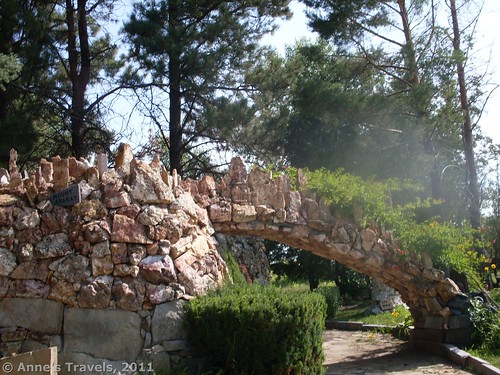
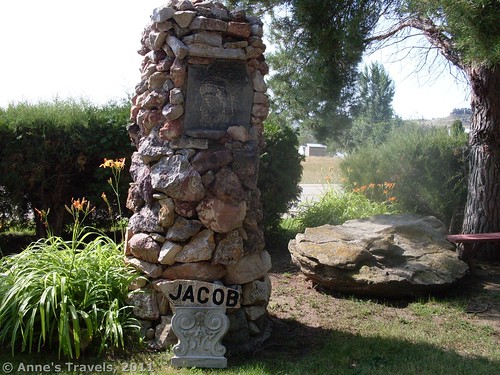
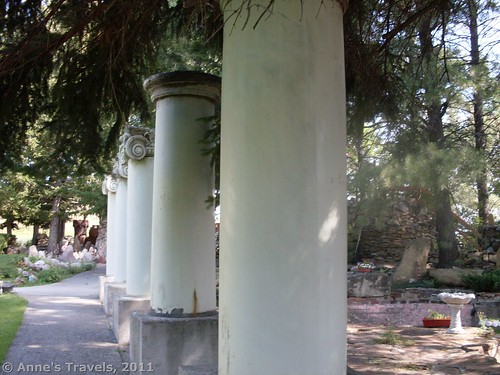

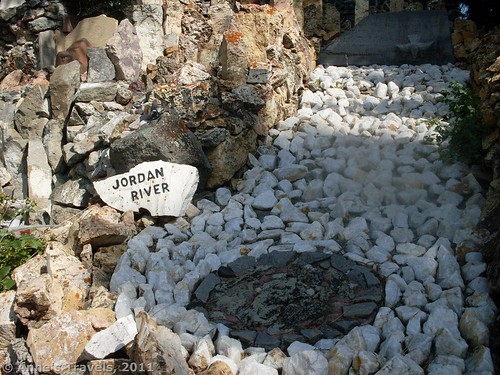
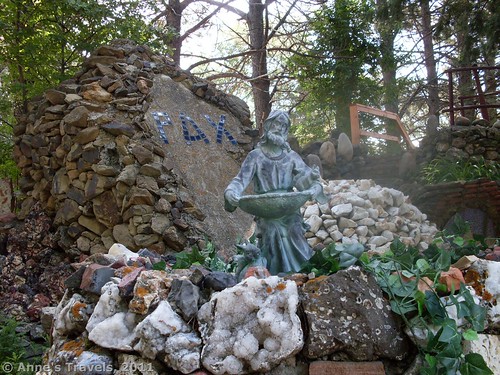
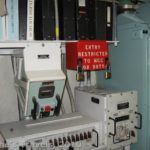
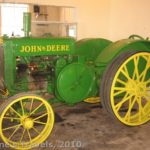
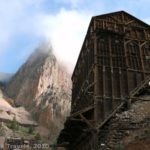
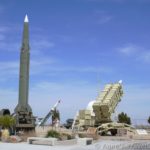

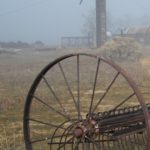
Pingback: Beautiful Views atop Beartooth Highway